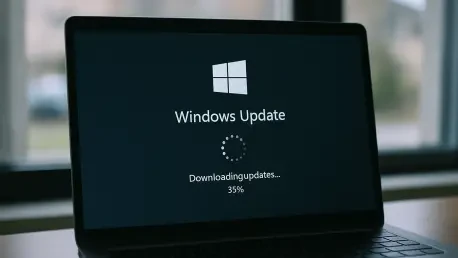I’m thrilled to sit down with Rupert Marais, our in-house security specialist with deep expertise in endpoint and device security, cybersecurity strategies, and network management. Today, we’re diving into a pressing issue affecting many Windows users—the recent Windows 11 August 2025 Security Update and its unexpected impact on NDI streams used in video production and broadcasting. We’ll explore the nature of the update, the specific disruptions it’s causing, the technology behind NDI, and the potential workarounds for affected users. Let’s get started.
Can you walk us through what the Windows 11 August 2025 Security Update is and the main reasons Microsoft rolled it out?
Absolutely. The August 2025 Security Update for Windows 11 is part of Microsoft’s regular patch cycle aimed at addressing vulnerabilities and enhancing system security. This update was primarily designed to tackle some critical security flaws that could potentially allow unauthorized access or exploits in the operating system. Microsoft’s goal with these updates is to protect users from emerging threats, but as we’ve seen, sometimes they introduce unintended side effects, like the issues with NDI streams.
What kind of disruptions are users experiencing with NDI streams after installing this update?
Users are reporting pretty frustrating problems with their NDI streams, including severe stuttering, noticeable lag, and choppy audio and video playback. These issues are particularly evident in popular streaming tools like OBS and NDI Tools, especially when features like ‘Display Capture’ are enabled on the source PC. It’s disrupting workflows for anyone relying on smooth, real-time video feeds, which is a big deal in fields like broadcasting and content creation.
For those who might not be familiar, could you explain what NDI, or Network Device Interface, is and why it matters?
Sure, NDI stands for Network Device Interface, and it’s a technology that allows high-definition video to be transmitted over a network with minimal latency and excellent quality. It’s a game-changer for video production and broadcasting because it enables seamless communication between devices and software over IP. Think of live streaming setups or multi-camera productions—NDI makes it possible to handle all of that efficiently without the heavy bandwidth demands of other methods.
Microsoft has pointed to the Reliable User Datagram Protocol, or RUDP, as a key factor in this issue. Can you break down what RUDP is and how it fits into the picture?
RUDP, or Reliable User Datagram Protocol, is a hybrid protocol that blends the speed and simplicity of UDP with some of the reliability features of TCP. It’s tailored for real-time applications like multimedia streaming, where timing is everything. NDI uses RUDP by default to ensure data packets arrive in order and on time. The problem with the security update seems to interfere with how RUDP handles data, causing those delays and stutters we mentioned earlier, though the exact mechanism of the disruption is still under investigation.
What options or temporary fixes have been suggested for users struggling with these NDI streaming issues?
Both Microsoft and the NDI team have offered a couple of workarounds. One is switching from RUDP to either TCP or plain UDP for NDI communications, which can be done through the settings in most NDI-compatible software. TCP offers more reliability but at the cost of higher latency, while plain UDP is faster but might drop packets. Another option is uninstalling the August 2025 Security Update, though that’s risky since it leaves systems exposed to the vulnerabilities the update was meant to fix. For those who haven’t installed it yet, delaying the update until a permanent solution is available is also advised, which can often be managed through Windows Update settings.
How widespread do you think this issue is, and are certain Windows versions more affected than others?
The scope of the issue seems to be limited to a subset of users who rely on NDI for streaming, so it’s not impacting every Windows user. However, it does affect multiple versions, including Windows 11 24H2 and Windows 10 versions like 22H2 and 21H2. If you’re in video production or a similar field using NDI, you’re more likely to run into this problem. Microsoft is still gathering data on the full extent, but it’s clear this has hit a critical niche of users pretty hard.
Looking ahead, what’s your forecast for how Microsoft and the industry might address challenges like this with future security updates?
I think we’re going to see Microsoft double down on more rigorous testing before rolling out updates, especially for niche but critical technologies like NDI. There’s also likely to be a push for better collaboration between software developers and OS providers to anticipate these kinds of conflicts. On the industry side, we might see more robust fallback options built into protocols and applications to handle disruptions. Ultimately, it’s about striking a balance between security and functionality, and I believe the feedback from this issue will drive some meaningful improvements in how updates are managed.









